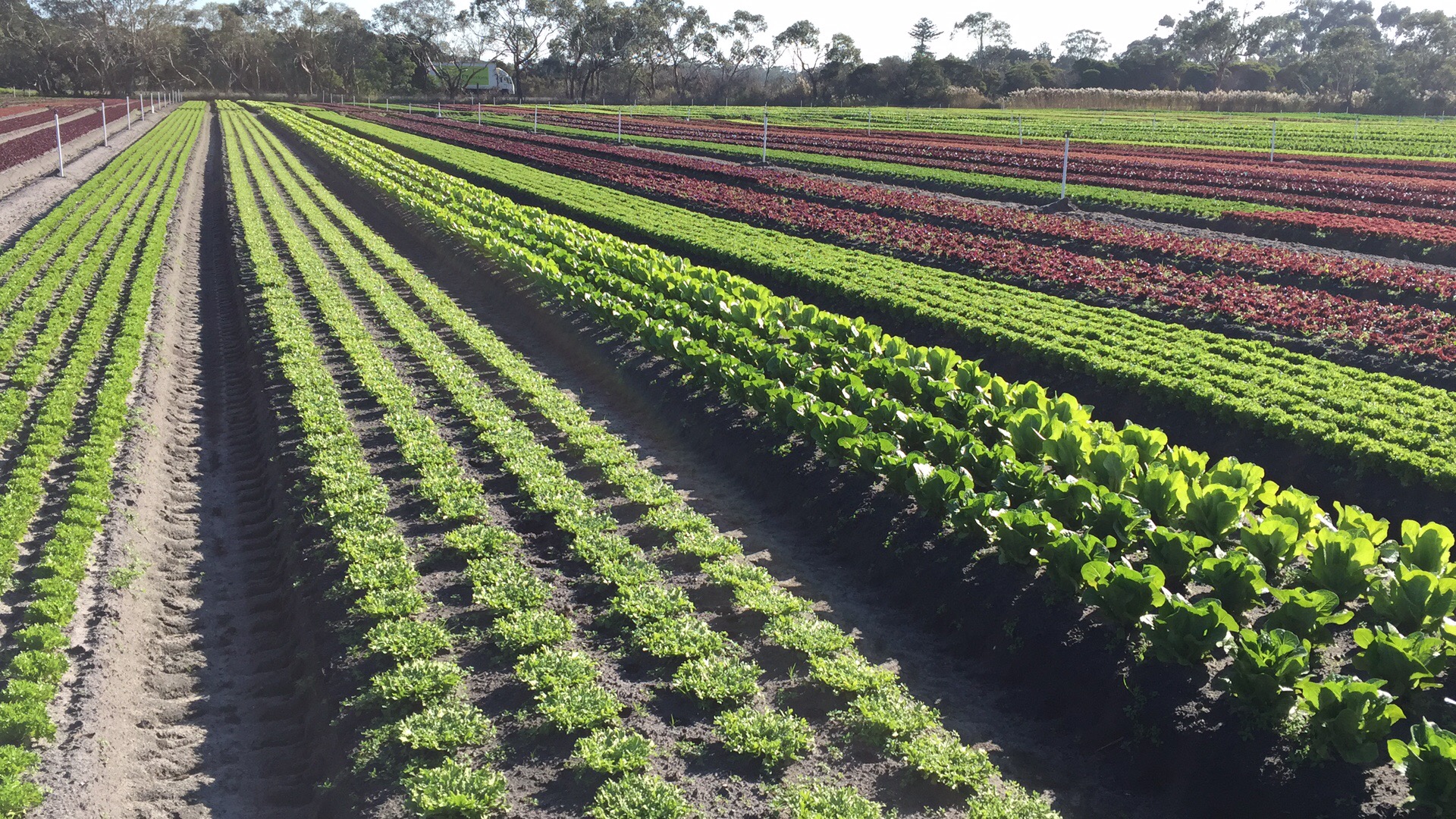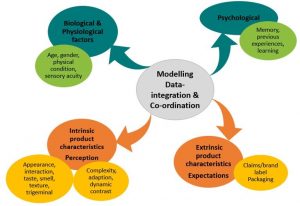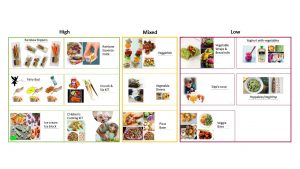
Helping hort industry members reach their full potential
24 November 2021
Single or mixed cover crops – what’s the best fit for vegetable production?
24 November 2021CSIRO, Flinders University and Nutrition Australia are working together to deliver VegKIT, an integrated five-year project designed to deliver tools and interventions for increasing children’s vegetable intake, with the ultimate aim of increasing veg intake by more than half a serve a day. The project’s latest activities include the development of new vegetable-based product concepts for Australian children. Vegetables Australia reports.
Researchers at CSIRO have been undertaking studies on a new scientific framework based on sensory science that can be used to develop new vegetable-based products for children. A range of new vegetable-containing concepts – both fresh and processed vegetables – have been designed using this framework, known as CSIRO Children’s Acceptance Model for Product development Of Vegetables (CAMPOV).
These activities are being conducted as part of a wider project entitled Tools and interventions for increasing children’s vegetable knowledge – VegKIT (VG16064), a strategic levy investment under the Hort Innovation Vegetable Fund.
Sensory focus
The CAMPOV model is set to guide food manufacturers in developing vegetable-based products for children, as CSIRO sensory and consumer scientist and project leader Dr Astrid Poelman explained.
“It’s based on key factors of food choice that are relevant for the development of vegetable-based food products for children. There is a lot of literature on how to increase children’s acceptance for vegetables, but not every part of that knowledge is modifiable in terms of creating insights that are relevant for the food industry and product development,” Dr Poelman said.
“It considers factors that are relevant to the child and the product. For the child, you have to think of biological and psychological factors; for example, children’s taste buds are still in development, and they taste foods differently to adults. They live in different sensory worlds, and this explains why children like sweet foods more and dislike bitter foods more than adults.”
When looking at the product, researchers took into consideration intrinsic properties such as appearance, taste and texture, as well as extrinsic properties like branding and packaging.
“We’ve undertaken literature reviews to gather the scientific knowledge about how these factors can be used to increase children’s acceptance of vegetables. We then developed the model with modifiable attributes based on this knowledge,” Dr Poelman said.
Testing the model
The team came up with fourteen concepts which were then evaluated through qualitative research involving 36 children aged between 5-8 years old during eight focus group sessions.
Overall, children had a high interest in six of the concepts: Rainbow dippers – vegetables and vegetable-based dips; ice cream and ice blocks with veg in them; fairy dust – a vegetable-based powder; Rainbow squeeze-mate – a vegetable-based sauce that can be squeezed on sandwiches; the Crunch & Sip KIT and a Children’s Cooking KIT.
 Factors from the CAMPOV model that positively influenced children’s interest in the concepts were bright colours, fun shapes, bite-sized pieces, good taste, fun eating experience, imaginative language, familiarity and role modelling.
Factors from the CAMPOV model that positively influenced children’s interest in the concepts were bright colours, fun shapes, bite-sized pieces, good taste, fun eating experience, imaginative language, familiarity and role modelling.
“There are a few of those concepts that are fun eating experiences, and that’s what the children really liked. Their parents agreed, and said it would be really appealing to children,” Dr Poelman said.
There were concepts that received a mixed response or low interest. Among these were a pizza base that contained vegetables; veggie sticks, which were vegetables on sticks similar to a kebab; vegetable nori-type sheets; and yoghurt with vegetables.
There were results that surprised researchers, particularly the mixed reactions to the pizza base with vegetables. However, there may be a reason behind this – as Dr Janne Beelen, who was also involved in the research, pointed out.
“Because pizza is a familiar and popular dish with children and parents, you can’t mess around too much with it. This was the same for wraps and bread rolls with vegetables in the dough,” Dr Beelen said.
“Therefore, if you were to develop these concepts, you need to make sure that it looks and tastes much like their familiar counterparts. It shouldn’t go too far away from what they’re used to, and what they like.”
The results from this study can be used to further develop and evaluate prototypes into products containing vegetables for children for commercialisation, and the CAMPOV Model can also be used by food manufacturers to develop further concept ideas.
Further investigation
Based on the work that has been undertaken so far, the CSIRO sensory team went a step further and developed specific prototypes.
“We gathered all the data and specifically developed some prototypes. For example, with ice blocks we looked at how far you can go with increasing vegetable content and if there was a trade-off between taste and vegetable content that you need to consider. And there was, so that will provide further tangible outcomes for industry,” Dr Poelman said.
One of the prototypes will be tested in a real-life setting: the school canteen.
“That will be produced by a commercial manufacturer for our study. It’s a snack pack with vegetables – the dippers and vegetable dips –we have looked in the earlier research at what the combination of the pack should have for optimal appeal. We’ll be selling those in primary school canteens and measure the sales. These are exciting new steps,” Dr Poelman said.

VegKIT is an integrated five-year project designed to deliver tools and interventions for increasing children’s vegetable intake.
Industry benefit
Dr Poelman explained that the idea behind this research is that if more successful vegetable-based products for children are being introduced to the market, this will increase vegetable consumption among children – and thereby drive vegetable demand.
“This will directly benefit Australian growers,” she said.
Additionally, there are concepts that use vegetables as an ingredient in a processed form.
“This provides an opportunity to reduce vegetable waste for vegetable products that might not be able to be sold in their whole form as they don’t meet the retail quality standards,” Dr Poelman added.
“There are also several concepts that use fresh vegetables, so it might provide some opportunities for growers who have an interest in starting to produce value-added products.”
“Lastly, children who eat vegetables ultimately become adults and parents that eat vegetables, so it provides a lot of opportunities to increase longer term demand for vegetables.”
Key recommendations
The CAMPOV model identified various factors that can be considered for the development of new sensory-based concepts containing vegetables:
- Enhancing visual appeal/appearance – related to good visual appeal, novelty and fun – but also packaging (labelling, characters and claims that promote sensory appeal).
- Enhancing the sweet taste of vegetable-containing products by using sweet tasting vegetables or fruits.
- Enhancing the flavour intensity, by using condiments or other ingredients.
- Reducing bitter taste – for example, by adding a small quantity of salty ingredients or condiments.
- Creating concepts with crunchiness.
- Creating concepts with novelty value or with a high ‘fun’ factor either through visual appeal or interactive engagement ‘play factor’.
- Creating concepts that build onto existing, familiar products that are liked by children.
The concepts evaluated in the research focused on the intrinsic properties and ‘fun’ and not so much on other extrinsic factors. Concepts covered all eating occasions for children (main meals, snacks, at school) and considered the Australian climate, environment and culture. The list of concepts also included ideas that draw on current food trends, such as meal kits and subscription models.
Industry resources available online
The VegKIT team has compiled tools and resources to support industry and grower efforts to increase children’s vegetable intake.
These include an interactive webinar aimed at the food industry entitled New opportunities for developing vegetable products for children. We’ve done the science for you. There is also a report with a similar title that details the topics covered in this article.
To check these out and more, please visit the VegKIT Resources page.
Find out more
The VegKIT website now contains a suite of practical, evidence-based resources for food industry, health professionals, schools and day care centres.
This project has been funded by Hort Innovation using the vegetable research and development levy and contributions from the Australian Government.
Project Number: VG16064




